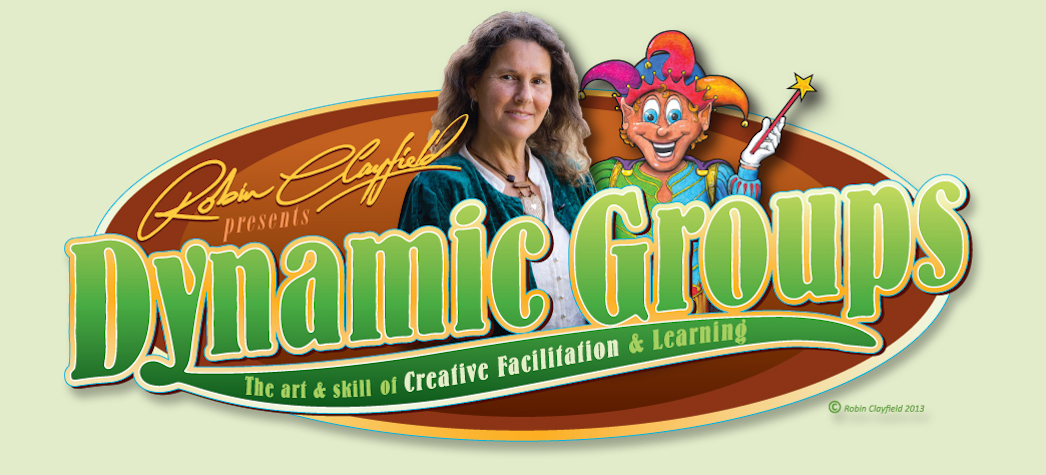Participants from Robin’s ‘Dynamic Groups, Dynamic Learning’ courses go back into the world, back to their groups and into their workplaces and communities with a huge toolbox of processes to try out, adapt and share with their groups plus the confidence and ability to create whatever they need for any group or learning situation.
 Several past participants from the courses attended Robin’s session at the Permaculture Convergence in Tasmania recently and took on Robin’s challenge to jump in the deep end and lead the group of 35 people with a favourite processes they’d gleaned, modified or adapted from the Dynamic Groups course. Tamara Griffiths, Permaculture teacher from Victoria was one of them. She used a card game. Pete the Permie had some fun with puppetry and Dick Copeman from Northey Street City Farm had us cross crawling as an energiser. Here’s what Tamara wrote about the process she used.
Several past participants from the courses attended Robin’s session at the Permaculture Convergence in Tasmania recently and took on Robin’s challenge to jump in the deep end and lead the group of 35 people with a favourite processes they’d gleaned, modified or adapted from the Dynamic Groups course. Tamara Griffiths, Permaculture teacher from Victoria was one of them. She used a card game. Pete the Permie had some fun with puppetry and Dick Copeman from Northey Street City Farm had us cross crawling as an energiser. Here’s what Tamara wrote about the process she used.
“I’ve done three of Robin’s DG courses now. Its probably why I love teaching so much – because its so creative and my brain loves it. I think the students love it too, my classes are pretty fun – even for serious topics like earthworks! The process I showed in Tassie stemmed from my trip to Antarctica last summer. I found an Antarctic food web sheet of stamps at the only post office in Antarctica, in Pt Lockroy. I immediately thought I’m going to use this as a teaching tool for ecology in my PDC. So I blew up the stamps onto A3 and cut out individual animals. Then came the fun part – on the back of each animal I wrote up what it ate and who ate it. Down there krill is the keystone species so I made sure I had variations available on the phytoplankton populations that vary with ocean temperature. I used abut 100m of ribbon (in different colours of 10m each) and asked who has phytoplankton – they then read out the card. I handed them the ribbon. Then I asked who eats the plankton – someone said “yes” and read out their card. As it was a connection I gave them the ribbon and repeated the process until everyone had had a go and the whole group was connected as in an ecosystem. I then said that the ocean was warm that year and there were less diatoms – which is the krill’s favourite food. The person holding the krill dropped the ribbon and then it cascaded through the ecosystem showing how collapse works.”
 Dynamic Groups, Dynamic Learning Dynamic Courses, Books, Resources and Tours for Healthy Groups, People and Culture with Robin Clayfield
Dynamic Groups, Dynamic Learning Dynamic Courses, Books, Resources and Tours for Healthy Groups, People and Culture with Robin Clayfield